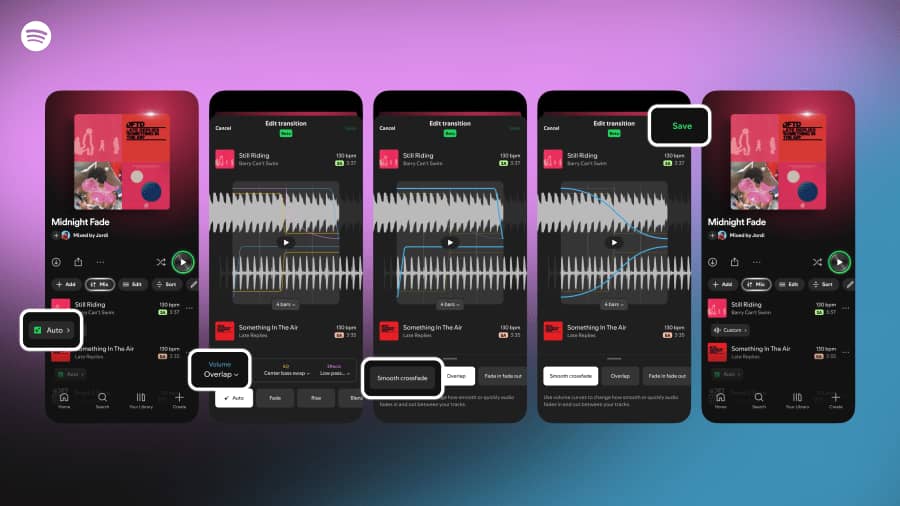Spotify has just introduced a feature that gives music lovers even more creative power over their playlists. Starting this week, subscribers can now add professional-style transitions between tracks, making listening experiences smoother, more dynamic, and tailored to personal taste.

How It Works
The new Custom Transitions feature lets users automatically insert transitions between songs or fine-tune their own mixes. With preset options like fade, rise, and blend, plus tools to adjust volume, EQ, and effects, subscribers can take their playlists beyond simple song queues.
To try it out, simply:
- Open any playlist.
- Select “Mix” from the toolbar.
- Experiment with transitions, effects, and track positioning using waveform and beat data.
For beginners, Spotify has made the process easier by automatically displaying each track’s key and beats per minute (BPM). This allows even novice mixers to experiment confidently without prior DJ skills.
Why It Matters
Spotify users have collectively created nearly 9 billion playlists, and this update directly appeals to fans who love curating unique listening experiences. It also comes at a time when rival platforms are introducing their own DJ-style tools — with Apple Music testing its AutoMix feature in the upcoming iOS 26 update.
By adding transitions, Spotify gives playlists a DJ-like flow, perfect for house parties, workouts, or even personal soundtracks. Premium subscribers can also save and share their mixes, invite friends to collaborate, and toggle the “Mix” option on or off depending on the mood.
More Than Just Transitions
This release follows a string of updates aimed at giving users more personalization and control over their listening journey. Recent tools include:
- Adding, sorting, and editing playlists more flexibly.
- Customizing Discover Weekly by genre.
- Snoozing tracks you’re not ready to hear.
- Making voice requests to Spotify’s AI DJ.
On top of that, mixed playlists can be styled further with custom cover art, stickers, and labels, giving them a unique identity.
What Spotify Recommends
The company notes that transitions work especially well with genres like house and techno, where tracks are often produced for seamless blending. Still, the feature is open to experimentation, allowing any playlist from Afrobeats to Pop, to be transformed into something more immersive.

With this rollout, Spotify isn’t just giving users new tools, it’s bridging the gap between casual playlisting and real DJ-style mixing, making it easier than ever to create a soundtrack that truly fits the moment.



















